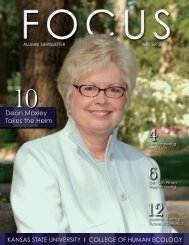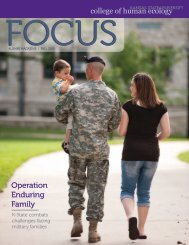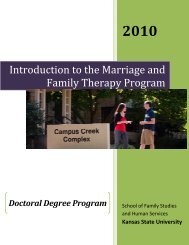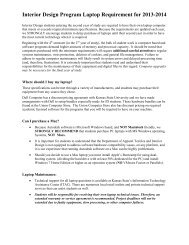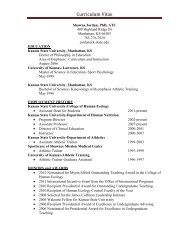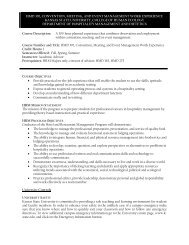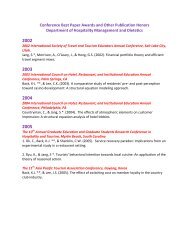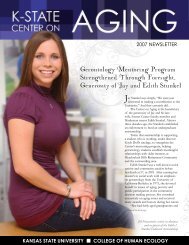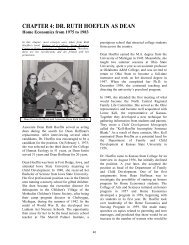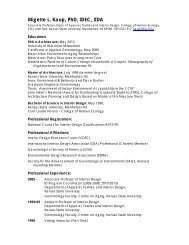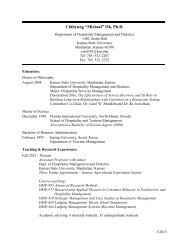Spring 2013 - College of Human Ecology - Kansas State University
Spring 2013 - College of Human Ecology - Kansas State University
Spring 2013 - College of Human Ecology - Kansas State University
You also want an ePaper? Increase the reach of your titles
YUMPU automatically turns print PDFs into web optimized ePapers that Google loves.
Past<br />
Success built on a limestone foundation<br />
Six limestone buildings tell the story <strong>of</strong> <strong>Human</strong> <strong>Ecology</strong>’s 140-year<br />
heritage. Within the rock walls <strong>of</strong> these six buildings beats the heart<br />
<strong>of</strong> the college — the leaders, the faculty, the staff, the students.<br />
Bluemont Building<br />
Anderson Hall<br />
In 1859, on a hill west <strong>of</strong> the newly formed town <strong>of</strong> Manhattan,<br />
Isaac T. Goodnow established Bluemont Central <strong>College</strong>, a primary<br />
and preparatory school, to promote education and science in the<br />
<strong>Kansas</strong> Territory. Less than a month after <strong>Kansas</strong> became a state in<br />
1861, school trustees sought state university status. They promised<br />
to donate land and their 44-by-60-foot limestone building. The<br />
Morrill Act strengthened their case and in 1863 <strong>Kansas</strong> <strong>State</strong><br />
Agricultural <strong>College</strong> became the first land-grant institution to open<br />
its doors to students. In 1873 when President John A. Anderson<br />
established three divisions <strong>of</strong> study — domestic science, agriculture<br />
and engineering — Hattie Cheseldine taught 12 women sewing,<br />
dressmaking and millinery on the stage <strong>of</strong> the Bluemont Building.<br />
The students learned to disassemble and reassemble the college’s<br />
one sewing machine. The teacher earned $35 a month. The building<br />
was razed in 1883.<br />
Farm Machinery Hall<br />
In 1875 domestic science classes moved, with the young college,<br />
to the present campus where the main building was the Farm<br />
Machinery Hall. On the second floor Mary E. Cripps, a successful<br />
millenary businesswoman from New York, taught sewing and<br />
household<br />
economics.<br />
Chemistry pr<strong>of</strong>essor<br />
William K. Kedzie<br />
instructed the<br />
young women<br />
in household<br />
chemistry. This class<br />
later transferred<br />
to human ecology<br />
and became human<br />
nutrition. Domestic<br />
science was made a department in 1876 — the Department <strong>of</strong><br />
Household Economy. The building was razed in 1963.<br />
At a cost <strong>of</strong> $20,000 — $6,500 for the stonework alone —<br />
Anderson Hall added a south wing in 1885. Sewing classes moved<br />
to the new first-floor sewing room, which was top <strong>of</strong> the line with<br />
six machines, dress forms and patterns. A model kitchen, dining<br />
room furniture and a dairy were in the basement. Faculty numbered<br />
two: Nellie Sawyer Kedzie and Elida Winchip.<br />
Kedzie Hall<br />
The building, completed<br />
in 1898, is believed to be<br />
the first structure built<br />
for home economics in<br />
the world. First called the<br />
Domestic Science Building,<br />
it was renamed for Nellie<br />
4






